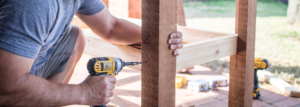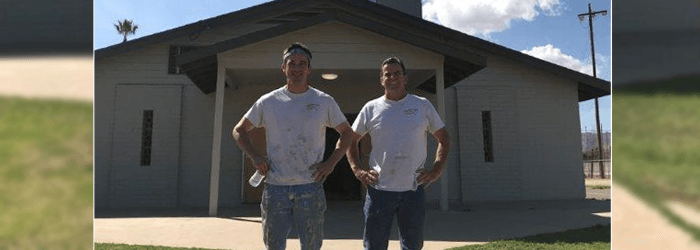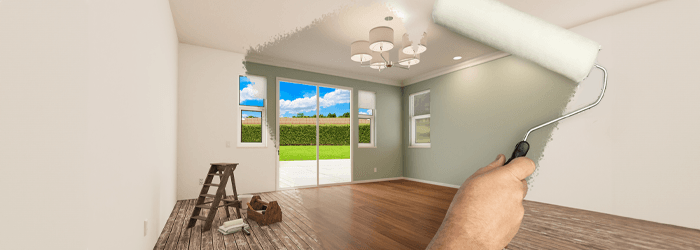Last week we looked back on the most popular blogs of 2023. This week we look at the top five Do-It-Yourself articles of the year. Maybe they are topics you are most interested in, too!
1 | Is Replacing A Showerhead A Do-It-Yourself Job?

How To Replace A Showerhead
Yes! Changing out your showerhead can be a do it yourself job and we are going to help you do it.
Luckily, it’s pretty easy to replace a showerhead. Even if your current showerhead “works just fine,” upgrading is a job that can save you money on your energy and water bills. With an upgraded showerhead, you can cut your water use anywhere from 25 to 60% by using less water, thus using less energy on hot water heating. Maybe it’s time to replace that water-hogging showerhead with a new model.
Is Your Showerhead Wasting Water?
If you’re still using a showerhead that you bought before 1992 — when all new models became low-flow — you could benefit from switching. Here’s a test to learn whether your showerhead is a water-hog:
- Place a bucket or other container that’s marked in gallon increments under your shower head.
- Turn on the shower at the level you usually use to bathe.
- Time how long it takes to fill the bucket with one gallon of water.
- If it takes less than 20 seconds to fill one gallon, consider switching to an updated low-flow showerhead, perhaps one from this decade.
2 | What is the Correct Mortar Mix Ratio for Masonry?
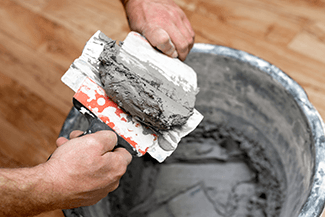 The experts and I agree, that with premix bags available, unless you are on a major jobsite with at least a dozen masons working, it’s just not worth mixing yourself. However, if you are inclined to do so, our friends at Superlite Block have provided the industry standard directions below.
The experts and I agree, that with premix bags available, unless you are on a major jobsite with at least a dozen masons working, it’s just not worth mixing yourself. However, if you are inclined to do so, our friends at Superlite Block have provided the industry standard directions below.
There are a variety of mortar mixes that the mason contractor can mix up, depending on the type of material that is being installed:
- Type M (2500 psi)
- Type S (1800 psi)
- Type N (750 psi)
The different types are achieved by varying the ratio of Portland Cement, Lime and Sand. Type S mortar is the most common for the Arizona market so we will use this as the basis for our comparisons.
There are three primary ways to make mortar:
- Portland Cement, Hydrated Lime and Masonry Sand
- Masonry Cement and Masonry Sand
- Premixed Mortar
The Portland Cement, Hydrated Lime, Masonry Cement and Pre-mixed Mortar are available in bags, the Masonry Sand is generally available in “bulk quantities” that are delivered by a truck or can sometimes be purchased in big “super sacks” from the big box retailers.
3 | What Are Some Tips For Hanging Drywall?
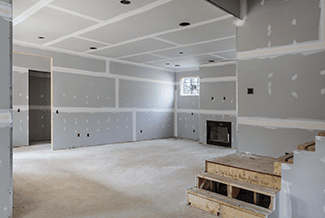 Hang Ceiling Drywall First
Hang Ceiling Drywall First
When hanging drywall, always hang the ceiling first. This is the hardest drywall to hang, so get a partner and go slow. Large cracks due to misaligned sheets are hard to repair because the extra mud required to fill them will constantly fall out and drop to the floor (or worse, down the back of your neck!).
Hang The Walls Next
When hanging the drywall on the walls, always hang the top sheet first. Raise a sheet tight to the ceiling and secure it with a drywall nail at the top and bottom at each stud. Complete the top row throughout the room before proceeding to the bottom.
Measurements
When hanging the bottom sheet, cut the drywall to fit around electrical j-boxes and plumbing rough-ins. Measuring from left to right, determine (to the nearest 1/8 inch) the horizontal measurements on the wall to the box location. Pulling from left to right, mark the exact location on the top edge of the drywall. Using a four-foot drywall square and a pencil, transfer these marks to the face of the drywall. For your vertical dimensions, do not measure up from the floor. Instead, measure down from the bottom of the drywall that you have already hung. Transfer this measurement, measuring from the top down. You should now have a layout of the material to remove using a drywall keyhole saw, cut the drywall on your lay-out marks to accommodate the junction box.
4 | I Never Use My Swimming Pool. Is There A Way To Cover It Permanently?
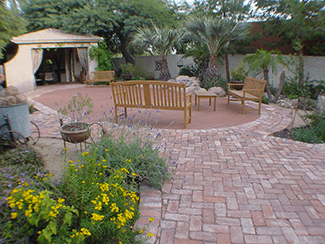 It might not be a good idea to permanently fill in or cover an old swimming pool.
It might not be a good idea to permanently fill in or cover an old swimming pool.
A better solution is to build a temporary deck over your swimming pool so you can remove it if you decide to sell your home later. A pool can add value to your home if you decide to sell.
Plus, if you fill in a pool and hide it under the dirt, you must disclose that fact when you sell your home. The excavation costs for a new pool in the location where the old one was could be astronomical.
Rosie recommends that you cover your unused pool with a deck made from a composite material. Composite is a wood-polymer lumber made from wood waste mixed with reclaimed plastic from shopping bags and plastic film. Composite wood is substantially more durable than the 100 percent vinyl or plastic wood products on the market. It’s also virtually maintenance-free.
When you want to use the pool again or sell your home, you can have the deck removed and resurface the pool.
5 | Super Cooling Your Home
 We have homeowners all over the state, especially during the summer time, who want to know how to beat their summer cooling bill. How can I get my cooling bill for next to nothing??
We have homeowners all over the state, especially during the summer time, who want to know how to beat their summer cooling bill. How can I get my cooling bill for next to nothing??
By the time folks give us a call, sometimes they have spent 10s of thousands of dollars on new windows, new insulation, and other expensive home upgrades that may not make as big of a dent in their bill as the FREE money saving options. Those mentioned upgrades can be great for your home, but why not try the free option first and see a return on investment.
According to Steve Koepp of Advanced Home Systems, “the most important thing is rate selection. Most people are aware there are time of use rates. It’s the most economical rates out there and should be embraced. The cost on these plans are substantially less. On peak times will differ from utility to utility; for example, APS on peak is 3:00PM – 8:00PM where SRP is from 1:00PM – 8:00PM.”
Koepp goes on to tell us that with the time of use rates, “85% of the time [utilities] are selling you power at a cost that goes back to the 1970s”. The idea is to shift your focus from how hot I can keep the house until I’m uncomfortable, to how cold I can keep the house till I’m uncomfortable.
So, there they are! The most popular Do-It-Yourself articles of 2023. There’s plenty more on our website for you to peruse.
From all of us at Rosie on the House, we wish you and yours a very happy, healthy, and prosperous new year!
###
PODCAST
Discussions on the concept of Super Cooling your home to save money and energy. Decking your pool instead of removing it. Hanging drywall. Correct mortar mix for masonry. And replacing a shower head.
Podcast Archive With Expanded Content and Resources
PHOTO CREDIT
- Rosie on the House
- Shutterstock




